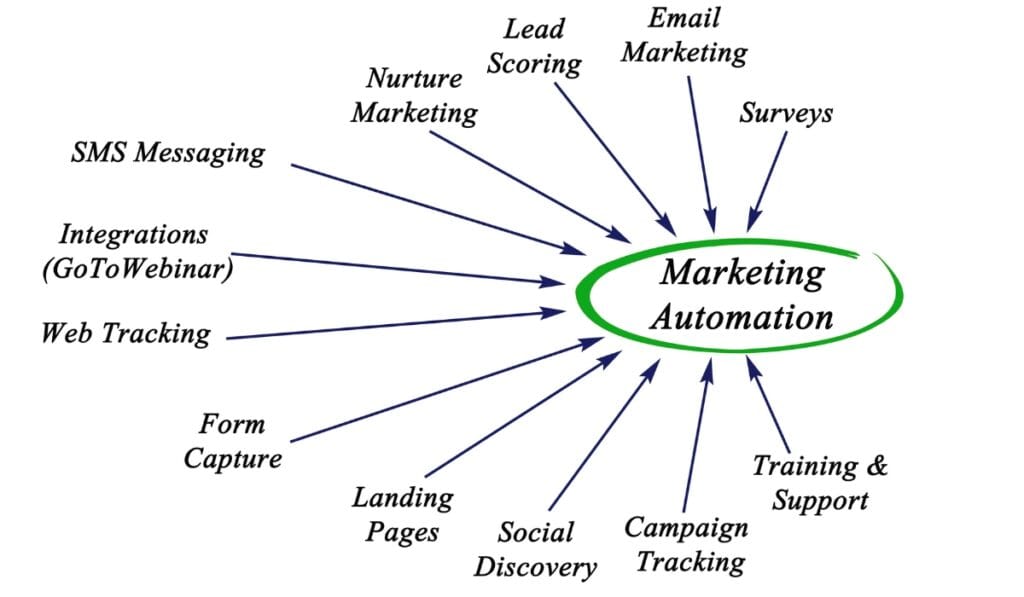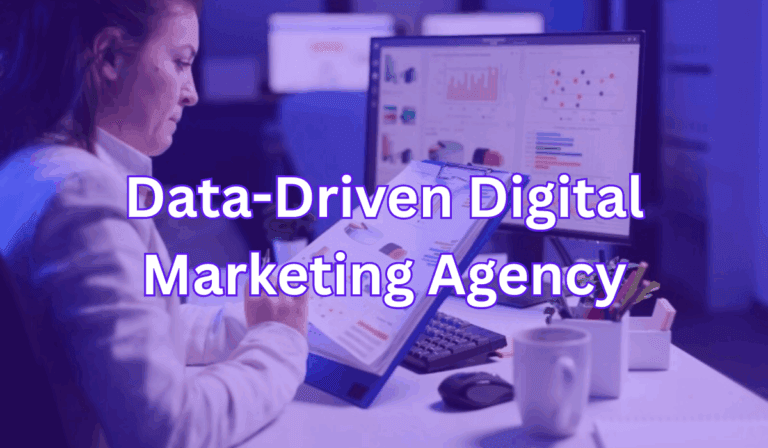Marketing automation is now an essential tool for companies who want to grow their businesses, improve workflows, reduce costs, and build relationships with customers. Yet, not every automation system is a success within a period of time. The performance can decrease as workflows get muddled, and the integrations could begin slowing down. A Marketing Automation Audit will help you identify any inefficiencies, gaps, or overlooked opportunities. It also helps ensure that the system you use is designed to be successful.
This tutorial will explain an automation audit, its importance, and how to conduct an effective review step-by-step. Whether you’re new to the field or have already implemented automated tools, the information provided in this guide will allow you to maximize your marketing budget and yield significant outcomes.

What Is a Marketing Automation Audit?
Marketing automation audits are the systematic assessment of your marketing automation tools, strategies, workflows, and results. The goal is to verify that the automation tool is working effectively and providing a quantifiable ROI for your company. The process will reveal issues like low-performing campaigns, outdated automated systems, and ineffective capabilities.
Why Conduct a Marketing Automation Audit?
Marketing strategies and tools are constantly evolving, as will your company’s needs. This is why audits are crucial:
- Increased ROI: Optimizing your workflow and system ensures that the money you invest in automation for marketing is delivering actual positive results.
- Enhance User Experience: Outdated or unproductive campaigns may cause your customers to be frustrated. A thorough audit can help you refine your customers’ journeys, resulting in better satisfaction.
- Accuracy of data: Over time, the automation software may gather inaccurate or outdated data. Regular audits clean the database and increase targeting precision.
- Capacity to Scale: If your enterprise has expanded, your workflows may have to be adjusted to meet the demands of the increased number of customers or for different goals.
Once we’ve covered the fundamentals, let’s explore how to carry out an efficient audit.
How to Conduct a Marketing Automation Audit
1. What Are Your Business Goals, and Are They Aligned?
Begin by asking yourself, “What are the primary goals of my marketing automation system?” Are you seeking to build relationships with leads, boost conversion rates, or decrease the rate of churn? The goals of your business may change since the time you first introduced automation. Be aware of whether your workflow campaigns, as well as data reports, are aligned with your goals for the future.
Example:
- If lead nurturing has become your area of focus, ensure that your workflows effectively move leads to each funnel step.
- If your goal is to improve sales, check if your lead scoring method accurately determines leads with high potential to help your sales personnel.
2. Is Your Marketing Database Clean?
An unclean database could undermine even the most advanced technology. You should ask, “Is my email list full of inactive subscribers, unverified leads, or outdated contacts?” Check your database to eliminate duplicates, unactive contacts, and incorrect entries. Software like Konsolve’s cleansing tool automates the process of cleaning it to ensure that your marketing campaigns are targeted to the correct people.
You can also separate your database by important criteria like location, behavior, or purchasing intent. This allows you to create specific, more targeted marketing.
3. Are Your Workflows Optimized?
Marketing automation workflows lie central to the system. They drive lead nurturing, onboarding processes, Re-engagement, onboarding sequences, and much more. Are these workflows being well-designed? Consider the following factors:
- Are your drip marketing campaigns appropriate to the preference?
- Do customers drop off at certain points? Examine bottlenecks and gaps within the user’s journey.
- Are there ways to streamline the complex workflow process or cut out unneeded processes?
In this case, for instance, people may cease interacting after a particular message in drip-like sequences. When you recognize this, adjust the message or timeframe to encourage them to engage.
4. Are You Using All the Features of Your Automation Tool?
A lot of businesses are not making the most of their marketing automation systems. The most important part of a review is asking, “Am I using this tool to its full potential?” Let’s look at the capabilities of your program:
- Test tools include A/B tests as well as dynamic content and personalization tools.
- Reporting dashboards can be used to analyze important metrics such as the rate of open, click-through rate, and conversion rate.
- If the platform you use integrates with third-party software (e.g. tools for CRM such as Salesforce and analytics tools such as Google Analytics), ensure that these integrations work in a proper manner.
For example, Konsolve offers advanced segmentation and reports. You should make sure that you’re using these tools to analyze the audience’s behavior and campaign performance.
5. Are You Measuring the Right KPIs?
Are your Key Performance Indicators (KPIs) in line with your objectives? The most common KPIs used for marketing automation comprise:
- Rates for open email
- Click-through rate
- Rates of conversion
- Ratio of conversion from lead to customer
Check regularly whether your indicators are growing or declining. Utilize analytics tools to assess the efficacy of your marketing campaigns and pinpoint areas that require enhancement.
6. Is Personalization Being Used Effectively?
It is important to ask yourself, “Am I making full use of the personalization features available?” Personalized marketing is not an option anymore. Your customers expect personalized experiences that satisfy their particular demands. Evaluate:
- Do your emails contain the name of a client, or are they a reference to your previous interactions?
- Are you segmenting audiences for targeted messaging?
- Are sales outreach efforts based on data derived from customers’ behavior?
Making your communication seem more pertinent to your audience will boost participation and increase conversions.
7. Are Compliance Standards Being Met?
Regulations on marketing data like GDPR and CCPA are required to be in compliance so that you prevent legal penalties. During your audit, ask:
- Are you collecting and keeping information responsibly?
- Do you have clear and unambiguous consent from the people who are inserted into the automation system?
- Do your opt-out procedures run smoothly and are user-friendly?
Check that your equipment and methods have been designed to manage the compliance issue efficiently. Konsolve has features that can help you simplify complying with these laws.
8. Are you keeping up with the latest trends?
Market insights, trends, and technology are continually evolving. Ask:
- Are my current campaigns in line with the latest trends in marketing, like videos or interactive emails? marketing?
- Do I use the most up-to-date software, like predictive analytics, that can determine the audience’s behavior?
- Do I know the activities of competitors regarding automation?
Being aware of the latest developments in your industry helps ensure that your marketing strategies stay ahead of the competition.
Frequently Asked Questions (FAQs)
What is the significance of marketing automation?
Marketing automation can help businesses cut down on time and effort by handling tedious tasks like sending emails leads scoring, email sending, as well as data analysis. Also, it enhances the experience for customers by delivering timely, personalized messages.
What is the best time to conduct an audit on marketing automation?
It can be ideal to achieve an audit once every 6 to 12 months. However, if you’ve recently expanded your company or purchased new equipment, you may require periodic reviews.
Are small-scale businesses able to gain from automated marketing?
Absolutely. Marketing automation doesn’t have to be reserved for large corporations. Smaller businesses can benefit from software such as Konsolve to run targeted marketing campaigns, monitor customer behavior, and expand their customer base without having to hire huge teams.
What is the ideal tool to automatize marketing?
What is the “best” tool depends on your company’s needs. Konsolve is a great choice for companies that want a robust yet easy-to-use system that provides advanced reporting and customization options.
Enhance your Marketing Performance with Konsolve
A properly executed audit of marketing automation ensures that your campaign is designed to yield the best results. By cleaning your databases, enhancing the workflow, and staying on top of changing developments, your business will maximize its potential.
If you’re looking to change your marketing strategies and introduce intelligent automation, Konsolve can help. With scalable tools designed to expand your company with the right resources, you’ll be able to reach out to more clients, nurture leads, and increase the conversion rate.






